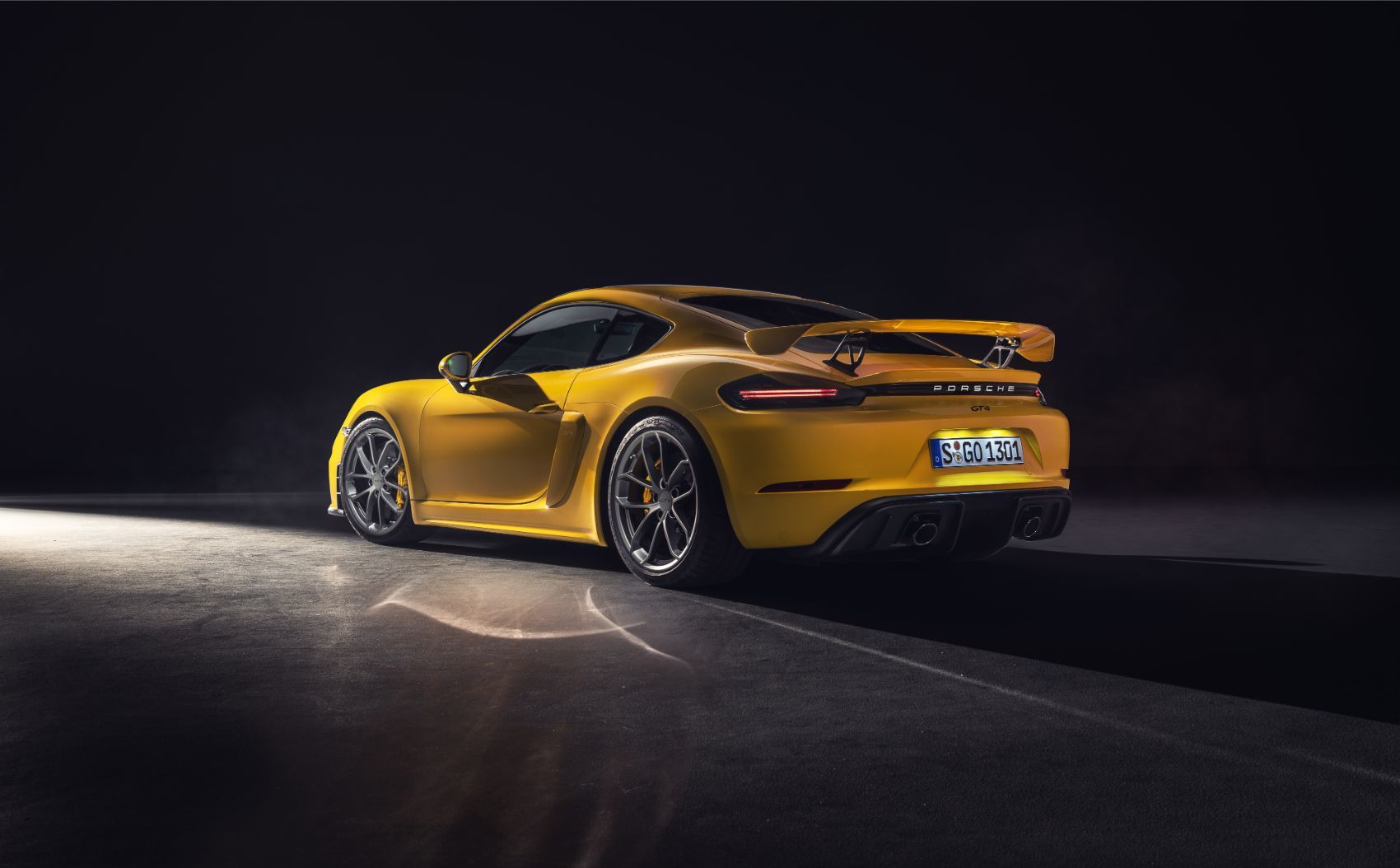If you believe the rumor mill, there were ongoing discussions (arguments, some say) within Porsche whether to build the latest 718 Caymans around six cylinders or four-bangers like they originally started out with. It looks like the gearheads won, because the latest variants will be packing a very impressive and powerful flat six. Huzzah! And that naturally-aspirated flat-six makes the 2020 Porsche 718 Cayman GT4 and Spyder the most powerful 718s to date.
Huzzah!
What Is The 2020 Porsche 718 Cayman GT4?
The 718 Cayman GT4 and 718 Spyder are right on the cutting edge of where Porsche is going to go. From an engineering perspective, a mid-engine car is much better than one with a rear engine. Porsche is a German company. German’s are (supposedly) cold blooded and logical. But Porsche also makes the 911, a decidedly rear-engine car. Meaning that Porsche has a lot of marketing momentum and – dare I say it – sentimentality tied up in keeping the iconic 911 as the top of the heap.
Ergo, the aforementioned discussions/arguments within Zuffenhausen about just how good to make the company’s mid-engine cars.
The answer, apparently, is Verdammt gut! because for 2020, the Cayman GT4 and Spyder are motivated down der bahn via a 4.0-liter flat-six that puts out 414 horsepower and 309 lb-ft. of torque. That is, technically speaking, “a lot” given the size of these cars and the rather healthy output from that big of an engine.
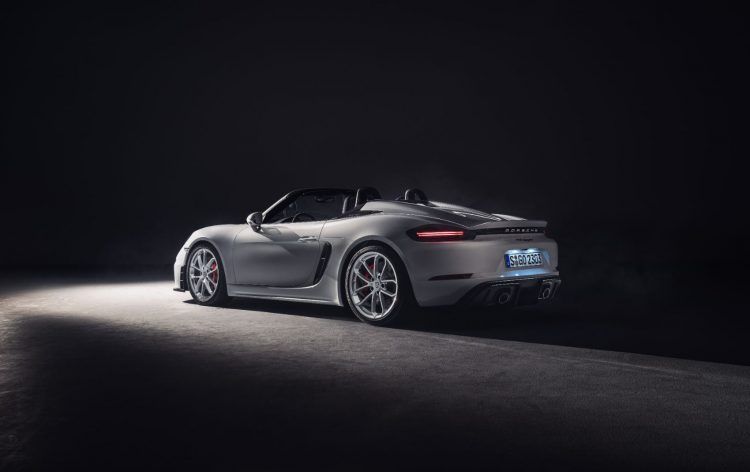
Torque Vectoring & Active Suspension
That engine has an 8,000 rpm red line and that six-speed transmission, although an old style manual, has an “Auto Blip” function that automatically matches gearbox and engine speeds during downshifts. Pretty trick. But if it’s too trick for you, it can be turned off. There’s a standard mechanical limited-slip differential with torque vectoring for optimum traction.
This all adds up to a zero to 60 time of 4.2 seconds for either the hardtop or the convertible. vMax is 188 mph for the GT4, while the Spyder can “only” reach 187 mph.
The performance (and the performance goodies) don’t stop there. Both cars share the track-bred Porsche Active Suspension Management system with its adaptive dampers, helper springs on the rear axle, and a ride height that is 1.18 inches lower than a standard 718 Boxster or Cayman. The suspension is fully-adjustable for those of you that, say, AutoX on the weekends and really want to tweak things. So, adjustments of camber, toe, ride height, and different anti-roll bar settings are there for the asking.
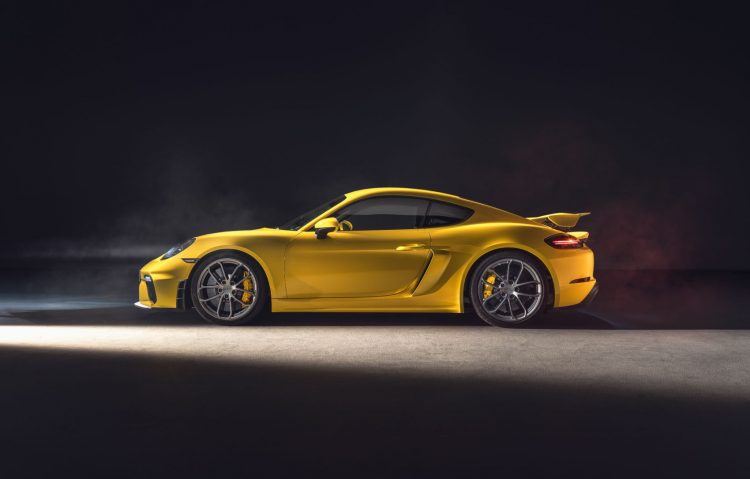
Straight Outta The Parts Bin
Porsche lifted the front axle from the 2018 911 GT3 and went to the same parts bin for the brakes. The standard stoppers are 380 mm cast iron rotors front and rear but, if you’re like me (and you have the money), go with the optional Porsche Ceramic Composite Brakes. They will save a whopping 50 percent of the weight versus their cast iron brethren, and also stop you like you threw out an anchor. The carbon ceramic rotors measure 410 mm in the front and 390 mm at the rear.
The tires are giant-sized affairs, riding on silver or Satin Platinum wheels, clocking in at 245/35 ZR 20s at the front and 295/30 ZR 20s at the rear. Of course, there’s ABS but there is also electronic stability and traction control, specifically dialed-in for the 718s. Yes, the ESC and TC can be switched off and in two stages at that. In case lap times count for your purchase decisions, the 718 Cayman GT4 can lap the Nordschleife more than ten seconds faster than its predecessor.
Related: Porsche versus the S&P: Can this classic sports car top the stock market?
Trademark Treatments
The 718 Cayman GT4 and Spyder are visually separated from their lesser stable-mates by the front spoiler lip, and the central air outlet ahead of the front luggage compartment lid (which helps with downforce and cooling). There are two “dynamic streamliners” on the rear lid and an automatically-extending rear spoiler found on the convertible. The rear diffuser is new and frames the sport exhaust system on both cars.
The GT4 gets its own manually-adjustable rear wing and side air intakes with additional side blades.
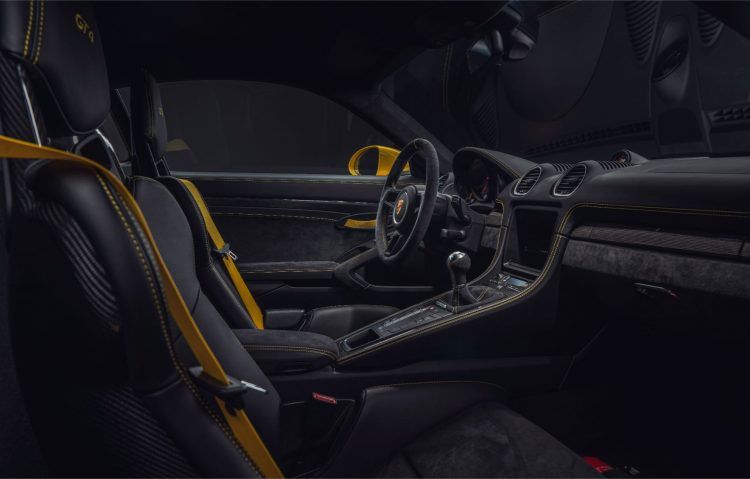
Step Inside The 2020 Porsche 718 Cayman GT4
The interior is also fresh. There’s a new GT Sport steering wheel (14.1 inches diameter) with a top center marker in black. The shift lever is shorter for a more direct and crispier feel. Sport Seats Plus are standard and have raised side bolsters for high lateral support, something you need on the track. The seat centers are Alcantara, as is the steering wheel rim, the shift lever, and the lower part of the dashboard. Classy. The Cayman GT4 gets Brushed Aluminum interior trim, while the 718 Spyders are painted to match the exterior color.
You can have your choice of either bucket seats or electrically-adjustable, 18-way sport seats. Air conditioning and the Porsche Communication Management system with Sound Package Plus are standard, of course. You can upgrade that with navigation and Apple CarPlay.
The Spyder has its own optional interior package, creatively dubbed the Spyder Classic Interior Package. This gets you two-tone leather in Bordeaux Red and Black, even more Alcantara upholstery, GT Silver Metallic interior trim, and a new, two-tone fabric top in black and red. Decorative interior stitching in red, silver or yellow is available for both cars.
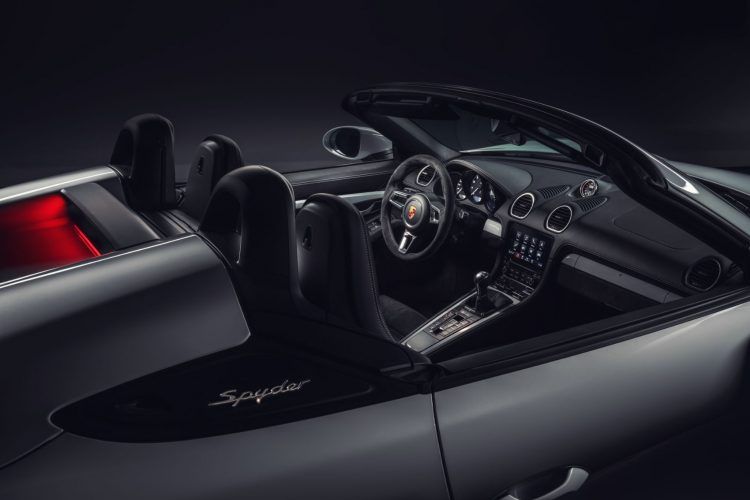
Pricing & Availability
The new Porsche 718 Cayman GT4 and 718 Spyder will reach dealers next spring. Bottom line? They will cost you $97,550 for the 718 Spyder and $100,450 for the 718 Cayman GT4.
Tony Borroz has spent his entire life racing antique and sports cars. He is the author of Bricks & Bones: The Endearing Legacy and Nitty-Gritty Phenomenon of The Indy 500, available in paperback or Kindle format. Follow his work on Twitter: @TonyBorroz.
Photos & Source: Porsche Cars North America, Inc.

